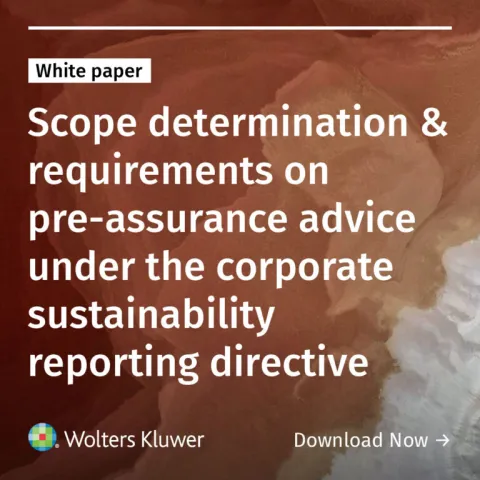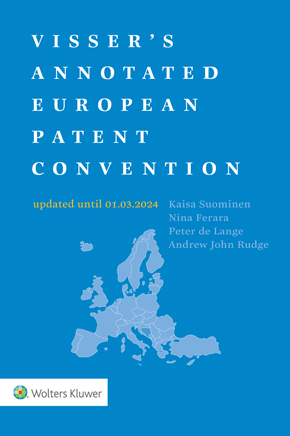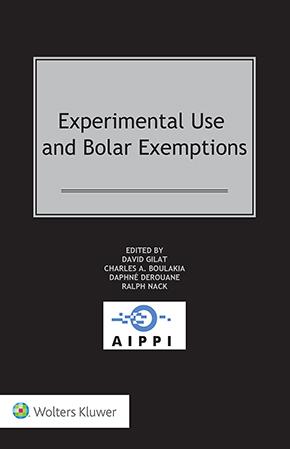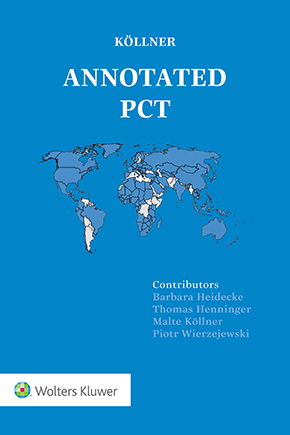Top 5 changes to the 2021 EPO Guidelines for Examination
February 2, 2021
Last year, the European Patent Office changed the publication schedule of the Guidelines as part of its Strategic Plan 2023 which meant there was no update to the Guidelines in 2020. The changed schedule also made room for public consultation to enable increased stakeholder involvement.
The first such public consultation ran for six weeks and closed mid-April 2020. Future consultations will follow a similar timeline. Following that consultation, as well as the usual Guidelines update process, the EPO has today published an advance preview of the Guidelines which will come into force on 1 March 2021.
Top 5 changes
1. Gender neutrality
Gender neutral language is more than a matter of political correctness because language powerfully reflects and influences attitudes, behaviour and perceptions. Using gender neutral language means that no particular gender is privileged, and prejudices against any gender are not perpetuated.
The EPO took the opportunity when drafting the 2020 Rules of Procedures of the Boards of Appeal to make the Rules gender neutral, for example, by obviating the use of the pronoun “he” and updating the term “chairman” to “chair”. The 2020 edition of the EPO’s European Patent Guide was similarly made gender neutral.
Continuing this effort, the 2021 edition of the Guidelines has been carefully updated throughout, for example, making amendments to refer to plural applicants and proprietors to be able use the pronoun “they”, and rephrasing sentences to avoid referring having to use any pronouns (e.g. H-II, 3.4 and E-IX, 2.3.4).
Correspondingly, many firms have already switched to using gender neutral salutations in their letters to the EPO.
2. Description amendments
Back in autumn 2020, EPO examiners were given internal guidance on providing a consistent set of expectations to applicants when bringing the description in line with amended claims. This caused a bit of a stir amongst patent attorneys when examination reports then started including a page-long boilerplate requesting various description amendments.
The internal guidance discourages examiners from the previous practice of proposing description amendments themselves in the Druckexemplar. This change may be due to the proportion of rejected texts intended for grant. Updated H-V, 2.7 instead instructs examiners to issue summons to oral proceedings if an applicant does not implement the requested description amendments.
When faced with the description amendments boilerplate, concerned applicants should consider asking the examiner for a consultation with screen sharing, e.g. using Teams, to reach informal agreement on the extent of amendments needed.
The boilerplate specifies that the applicant should amend the description to fulfil the following requirements:
- Embodiments which are not covered by the amended claims should be removed unless they can be considered to be useful for highlighting specific aspects of the amended subject-matter and are prominently marked as such
In this regard, updated F-IV, 4.3(iii) states that the inclusion of generic statements, such as “embodiments not falling under the scope of the appended claims are to be considered merely as examples suitable for understanding the invention”, are not sufficient to meet this requirement because such generic statements are seen to merely be a repetition of Article 69(1) EPC.
Additionally, previously acceptable amendments to replace “invention” with “disclosure” and “embodiment” with “example” are no longer considered sufficient to make clear that the part being described does not fall under the scope of the claimed invention. This is somewhat of a reversal from the previous Guidelines which allowed the retention of technical descriptions not covered by the claims as long as it was clear that they were background art or examples useful for understanding the invention.
Instead, any parts of the description which are no longer covered by the amended claims are expected to be “prominently marked” as such or deleted. The updated Guidelines provide suggested text for prominently marking: stating alongside the offending example “embodiment not covered by the claimed invention”.
As many patent specifications are drafted with a liberal seasoning of the terms "embodiment" or "invention" which each will need to be reviewed and adjusted if they no longer fall within the scope of the amended claims, the requirement to amend the description in this way places a substantial burden on applicants to review and amend entire descriptions. It may also be undesirable for applicants to make such amendments in case it affects added matter or claim interpretation post grant.
For its part, the EPO considers that such description amendments must be made to alleviate the burden of determining which embodiments are part of the invention, and which are not, from third parties in post grant proceedings. Some may feel that this broad-brush approach is excessive given the relatively small proportion of European patents that end up in infringement proceedings.
- All technical features of the independent claims shall not be presented as optional in the description. Terms such as "for example", "may", "can", "exemplary", "optionally", "preferably" and the like should be removed when preceding a feature of an independent claim.
This request from the boilerplate closely follows the updates in F-IV, 4.3(iii). At the same time as removing embodiments that are no longer covered by the claims, applicants are asked to check and update any embodiments that are covered by an independent claim to ensure that none of its features are described as optional. This applies to both the summary section and the detailed description of specific embodiments.
- The technical field and the summary of invention must correspond to the amended set of claims
Amended F-II, 4.2 mirrors the boilerplate in the suggestion that expressions such as “the invention is as defined in claim X” can be used instead of repeating the claims verbatim, which is already a commonly-accepted way of amending the summary.
- Subject-matter in the description being excluded from patentability under Article 53 EPC needs to be excised, reworded such that it does not fall under the exceptions to patentability or prominently marked as not being according to the claimed invention.
This requirement will most likely affect medical device inventions which are described with corresponding methods of using the device. Updated Guidelines F-IV, 4.3(iii) discuss that this requirement is similar to that of removing or prominently marking embodiments which are no longer covered by the amended claims. Therefore, the suggested text for prominently marking that the subject-matter is “not covered by the claimed invention” appears to also apply here.
Again, it may be undesirable for applicants to make such amendments in case it affects added matter or claim interpretation post grant.
- Claim-like clauses must be deleted prior to grant.
The requirement to remove claim-like clauses, usually included for divisional applications, is not in itself new or controversial. Amended F-IV, 4.4 adds reasons why such clauses must be deleted.
3. Unity harmonisation
Unity of invention is the first topic addressed by the EPO convergence project which aims to harmonise practice between the EPO and national intellectual property offices of participating member states. The harmonisation of unity of invention is not intended to change any requirements by the EPO or the participating national offices. Instead, the emphasis of this harmonisation is to have a common methodology when assessing unity which then sets a baseline for what is communicated to applicants by the EPO or participating national offices.
Whilst the EPO practice is nominally unchanged, the updated Guidelines have seen a major restructuring to set out the approach to assessing unity.
In updated F-V, 3, the two steps taken by examiners to assess unity of invention, carried over from former F-V, 2, are broken down and explained in greater detail. If a lack of unity is established, the claims are grouped based on their technical relationships, and this is now formalised into a new third step of the assessment. A reorganised section on grouping inventions is set out in F-V, 3.2. This gathers discussions from across former F-V, 2.2, 3 and 5 with minor revisions in its topics which include how independent claims in the same or different categories, dependent claims, and Markush groupings are handled.
Perhaps the most significant change coming from the harmonisation is in F-V, 3.3.1. This new section provides a detailed explanation of the minimum reasoning that examiners are expected to provide when asserting a lack of unity. This forms a kind of memorandum of understanding between the EPO and participating national offices.
The next topic addressed by the convergence project was designation of inventor where the Administrative Council recently approved changes to the Implementing Regulations that will simplify the requirements for applicants when providing inventors’ addresses. Future topics lined up for harmonisation over the coming years include the accordance of a priority date, re-establishment of rights, claim drafting and structure, and computer-implemented inventions.
4. Correction of debit orders
The Guidelines have been updated in A-X, 4.2.3 to set out that the EPO will now correct a debit order of their own accord in the event of a discrepancy between the type of fee intended to be paid and the corresponding amount due on the date of receipt of the debit order. The party making the corrected payment will be informed and given a two-month period for objecting to the correction. This procedure is already applied ad hoc by the EPO in some scenarios such as underpayment of the excess pages fee.
Note that the extent of the correction is in the amount of an already-indicated fee. Missing fees cannot be added onto a debit order by such a correction, even if those missing fees were also due on the date of receipt of the debit order.
This change should provide a safety net for applicants paying fees which have different amounts depending on the circumstances, such as the search and examination fees. This should also apply to the appeal fee, albeit too late for the swathe of unfortunate appeals (including T 3023/18, T 1060/19, T 2620/18, T 225/19, T 1222/19, and T 2422/18) which were filed using the reduced appeal fee by parties that were not entitled to the reduction.
5. Renewal fees during stay of proceedings
Under a stay of proceedings due to an entitlement action, Rule 14(4) EPC stipulates regarding renewal fees that: “All periods other than those for the payment of renewal fees, running at the date of the stay of proceedings, shall be interrupted by such stay”.
As renewal fees have a due date but are not defined by a “period” (except late renewal fees), this has led to differing interpretations as to whether renewal fees need to be paid during a stay, possibly by the applicant or the third party alleging entitlement.
Some academically compare the situation to interruption of proceedings in the event of the death or incapacity of the applicant or proprietor where the equivalent provision, Rule 142(4) EPC, is interpreted to defer the due date for renewal fees that fall due during a period of interruption.
However, under current practice, the EPO expects renewal fees to continue to be paid during the period of stay due to an entitlement action. This is now reflected in the updated Guidelines A-IV, 2.2.4. This update may have been precipitated by a relatively controversial remark in the examiners’ comments for the 2019 EQE Paper D that “Few candidates realized that the period for payment of the renewal fees is not interrupted”.
Honourable mentions:
- Procedure for videoconference oral proceedings is now discussed more extensively across the Guidelines, in particular in E-III, 8.5.2 on filing written submissions by email and E-III, 11 on technical aspects and preparation for videoconference oral proceedings. Other aspects are discussed in updated A-VIII, 2.5, D-VI, 3.2, E-III, 1, E-III, 2.2, E-III, 8.2, E-III, 8.3.1, and E-III, 8.11.
- Effect of corrections filed under Rule 20.5bis PCT - C-III, 1.3 is a new section discussing procedure before the EPO as designated or elected office if the receiving Office considered the correct application documents to be incorporated by reference.
- Claim formulation for computer-implemented inventions requiring additional devices or specific data processing means, e.g. electronic medical devices, has been revised in F-IV, 3.9.2. The amended discussion takes into account alternative method claim formulations that can be carried out by generic data processing means so that a device or computer product claim defined by reference to the method claim does not need to include the additional devices or specific data processing means.
- G-II, 3.6.4 introduces a new section on patentability of database management systems which includes discussion on indications of technical character.
- Another new section is G-II, 5.6 which sets out an extensive discussion on the patentability of antibodies and requirements depending on how a claimed antibody is defined.
- Updates following G 3/19 on the patentability of plants and animals exclusively obtained by essentially biological processes in F-IV, 4.12, and G-II, 5.2 to 5.4.
You may also like















Concerned observer
So it seems that the EPO has decided that it can now refuse to grant an application unless and until any subject matter retained in the description is clearly indicated as being either within or without the scope of the claims. Why is it not enough for the applicant to clearly indicate that the invention relates solely to the subject matter defined by the claims? Why effectively force the applicant to make a binding and irrevocable decision on the extent of protection of the claims? If certain subject matter is stated as not representing the invention, would that not tie the hands of the national courts when interpreting the claims (ie effectively prevent them from affording the claims a broader interpretation that they might otherwise feel is justified)? And what about the protection afforded to equivalents? Can application of the Protocol to Article 69 EPC afford protection for embodiments that have either been deleted or marked as not forming part of the invention? Is the EPO even competent to decide upon which embodiments can be retained on the grounds of being "equivalent" to subject matter falling within the literal scope of the claims? Questions such as those above are just the tip of the iceberg when it comes to potentially serious, permanent and unjustified harm to patentees that could be caused by the EPO's new approach to bringing the description into line with the claims. By way of contrast, the "harm" that could be caused by sticking to the previous, more liberal approach seems very tame indeed ... namely the need for third parties to seek professional advice before they can be certain that their proposed activities do not fall within the scope of the claims of a patent. Whilst the new approach no doubt reflects the decision in T 1808/06, why act now when that decision was issued more than a decade ago (and has been cited in only four subsequent decisions)? All of this strongly suggests that the EPO has not thought through the potential implications of their change of approach ... and has certainly not assessed whether that change is justified based upon a balance of relative benefits and harms.
MaxDrei
These days, I have the feeling that, inside the EPO, management doesn't give a toss about the law or the extent of protection given to the customers. All that interests them is "efficiency", driving down cost and driving up profit. The writer of this useful blog post surmises that EPO management saw the high rate of rejection of Examiners' scribbled amendments in the Druckexemplar as a drag on efficiency and profit, so resolved to do something about it. What should be our response? Perhaps invite our corporate clients all round the world to complain direct to the EPO about the absurd lengths that EPO managers are driven to go to, to "conform" the description to the claims to the satisfaction of management. Just like with Article 123(2) the situation is getting out of hand, and all because Examiner careers depend on pleasing EPO management, which finds it easier to monitor Examiner "quality" under Art 123(2) and 84 than 54 or 56, EPC.
Anon Y. Mouse
The change to practice with regard to description amendments feels to me like a solution in search of a problem. What on earth could be the justification for this? While it is well known that the EPO does not concern itself with matters of infringement, the management must surely be aware that claim interpretation is absolutely critical and that national courts may take different approaches. An embodiment falling outside the claims may not seem to the Examiner to be "useful for highlighting specific aspects of the amended subject-matter", or for better understanding the invention, but it may turn out to be critical at some later stage in national litigation in the face of prior art which was unknown to the Patentee or the EPO at the time of grant. Indeed, this could potentially become problematic during EPO Opposition and Appeal proceedings too. This change has either not been thought through, or has been taken with a profound lack of care or interest in what happens outside the EPO, not to mention what might happen even within the EPO during Opposition and Appeal proceedings.
Max Masni
"All that interests them is “efficiency”, driving down cost and driving up profit. " EPO is driven by profit and self-financed, like the future UPC court. That's why the EPO has a notation system, to push examiners to grant and get money out of renewal fees. It's a fraudulent institution.